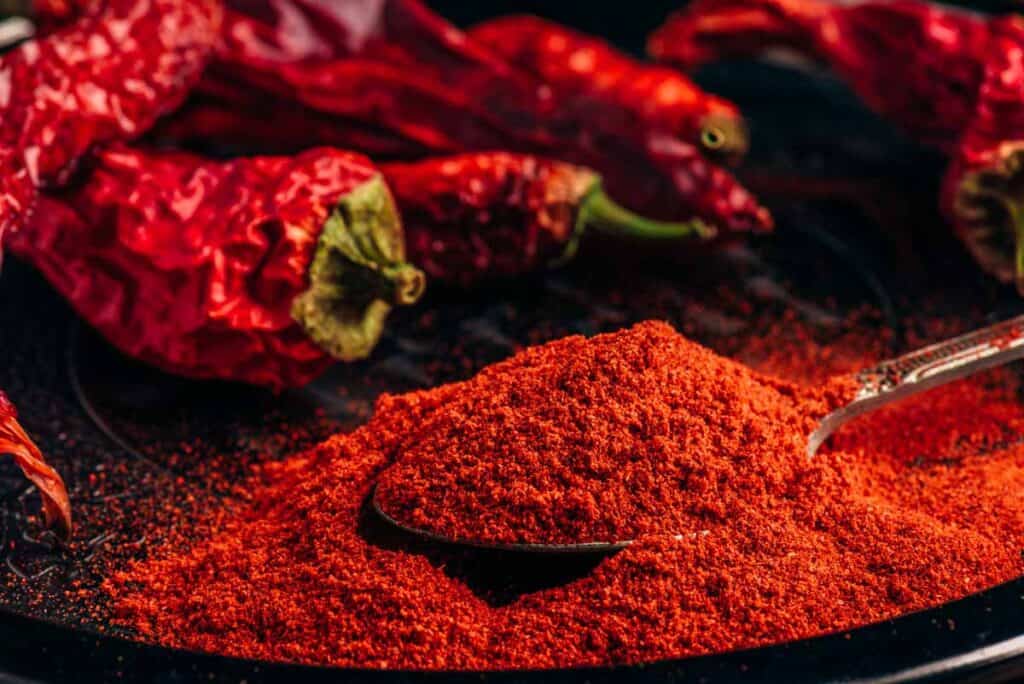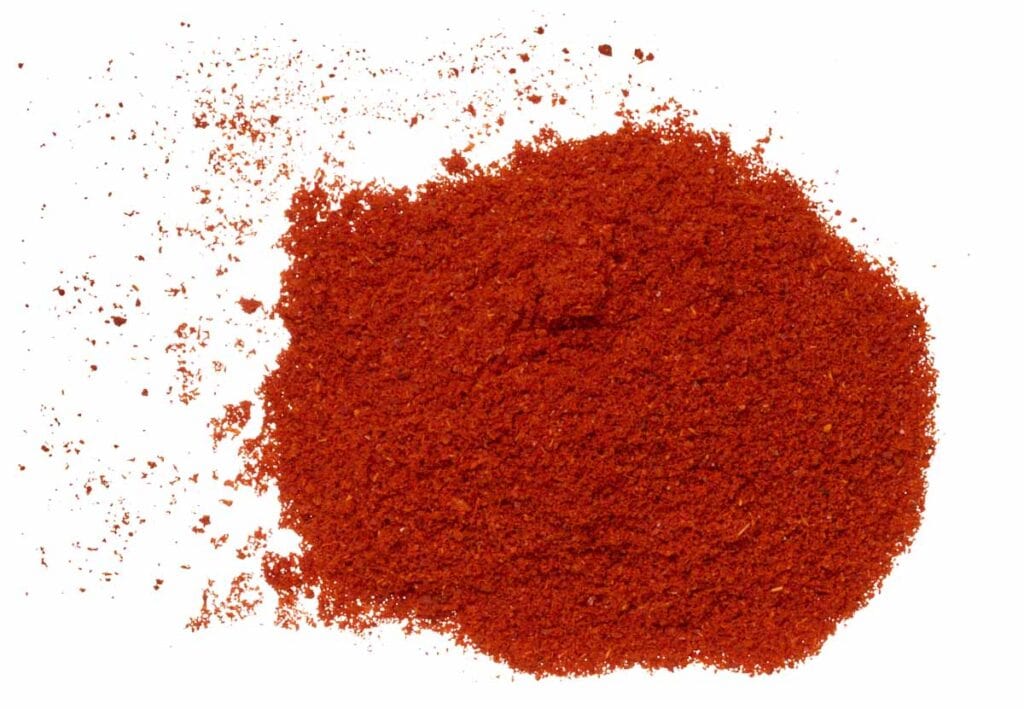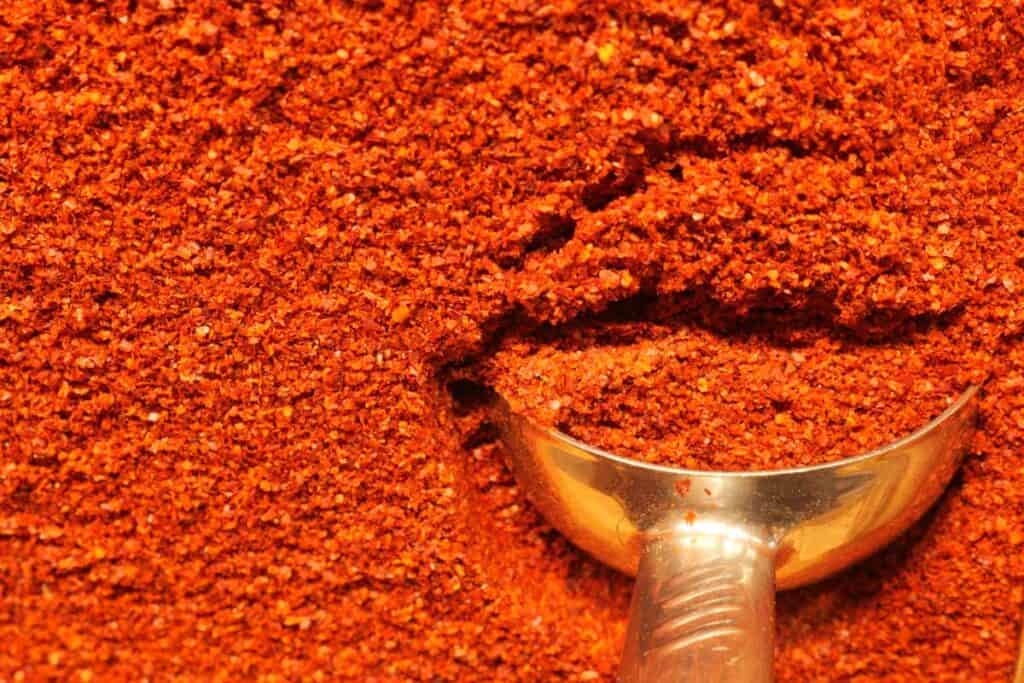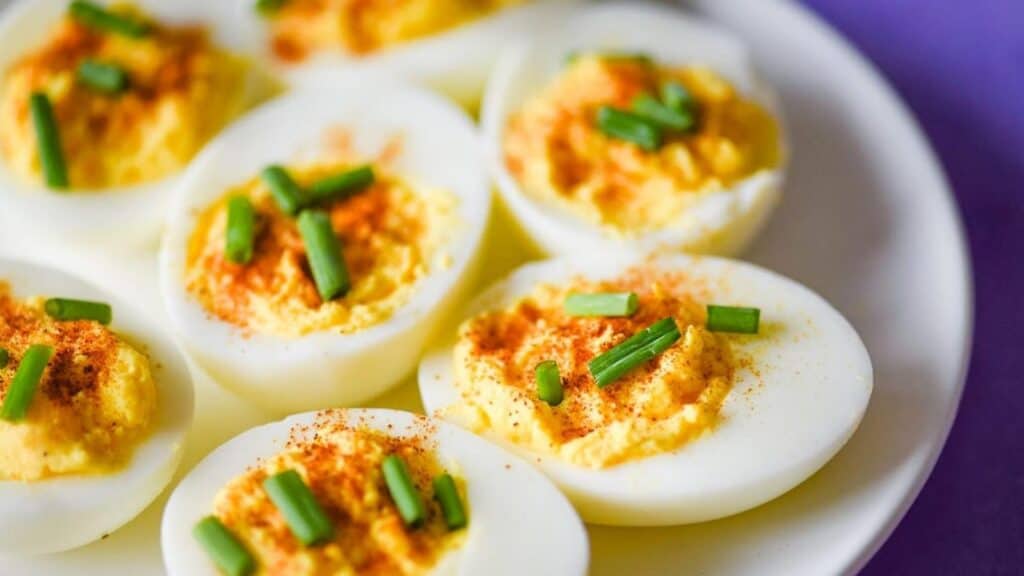Paprika is the ground powder of ripened and dried sweet red peppers. It is used in a variety of dishes, including in spice blends, soups, sauces, as a seasoning for proteins, and in potato and grain dishes. There are three primary varieties of paprika — sweet, smoked and hot — each of which has a distinct, rich, earthy flavor.

Selecting paprika
To make paprika at home, you will need to grow a mild variety of the Capsicuum anuum plant. Traditionally, Alma, Feher Ozon or Boldog peppers are used for paprika. It may be easier to find red sweet pepper or bell pepper plants.
You will need to dry the peppers completely. This can be done either by hanging them to dry with some twine or a needle and thread in an area of your home with good airflow. Allow them to dry until they are shriveled and no moisture remains. You can also dry them in your oven on its lowest setting or in a dehydrator.
Once fully dried, grind them into a fine powder using a spice grinder or a coffee grinder. Be sure to wear gloves and work in a well-ventilated area.
If you don’t have room for an outdoor garden, you can buy varieties of paprika from your local grocery store or spice shop. When buying spices, be sure they are stored in an airtight container. Paprika should be finely ground and bright red in color.

If you are buying your paprika from a spice shop, they may allow you to smell it before purchase. It should have a strong aroma that is either sweet or smoky depending on the type you are buying.
Avoid packages with discolored powder. Packages should also be free of excess moisture or any signs of mold.
The taste of paprika
Paprika can be sweet, smoky or spicy, depending on the variety you choose. It is savory, with a rich, earthy flavor and fruity or floral notes. Some varieties have a mild spiciness.
“Smoked paprika is my favorite. I love how it adds a smoky flavor to anything I make. I add it to pretty much any recipe that calls for paprika, and it is delicious on anything from roasted vegetables to popcorn — yes, popcorn — as well as the usual soups and chicken where you would expect to use it.”
— Michelle P, Honest & Truly

Storage suggestions
Unlike fresh herbs like parsley or basil, you do not need to wash paprika in any way. If you have ground your own paprika, keep it in an airtight container in a cool, dry spot like your pantry to preserve its flavor, texture and color. It will retain its flavor for several months.
If you bought paprika at a spice shop or grocery store, just keep them in their original container. If stored properly, it will typically last from six months to two years.
Culinary uses for paprika
Paprika is used to add flavor and color to various dishes. Ground paprika can be incorporated into rubs for meat and seafood dishes, marinades, sauces and dips, used as a topping for deviled eggs and added to rice, grain and potato dishes.
Add paprika to spice blends, like Cajun blackening spice, and use the blend on everything from blackened steak to blackened chicken sandwiches. Be sure to try paprika in spice blends from various cultures, like ras el hanout and adobo seasoning.
Paprika is delicious in soups and stews, like Hungarian goulash. It can add smoky flavor to salad dressings and condiments like barbecue sauce and some hot sauces.

Paprika is used in many cuisines, though it is most prominently used in Hungarian cuisine. You will also find paprika in Spanish, Moroccan, Turkish, Mexican, Indian and Southwestern American dishes.
Final thoughts
Paprika is a bright red powder made from ground sweet red peppers. It comes in several varieties, the most common of which are sweet, smoked and hot. Each variety has its own distinct flavor with notes of richness, earthiness and florality.
Paprika is available year-round at grocery stores, spice shops and markets. Ensure the containers are airtight and contain no signs of mold or moisture. The spice should be a bright red color, finely ground and aromatic.
Store ground paprika in an airtight container in a cool, dry place. As a dried spice, there is no need to freeze paprika.
Try paprika in spice blends, sauces, soups, salad dressing, marinades, condiments and as a seasoning for meat, seafood and egg dishes. It adds wonderful flavor and color to rice, grain and potato dishes as well.
If you’re planning a dinner party with friends who love food or just want to try something new, think about adding paprika to your recipes this week. You will love the range of sweet, smoky and spicy flavors it can add to dishes from around the world.
Gen La Rocca is a professional chef, writer and editor living in Southern California. She is the owner and recipe creator behind Two Cloves Kitchen, a food site featuring contemporary, California-inspired recipes. She has edited over 20 novels, short stories and essays for publication.